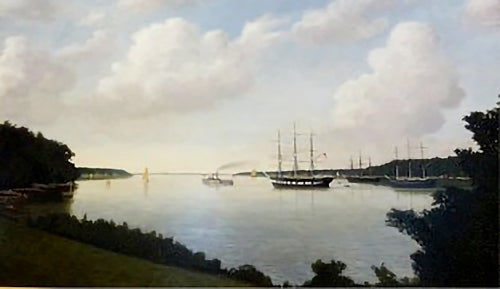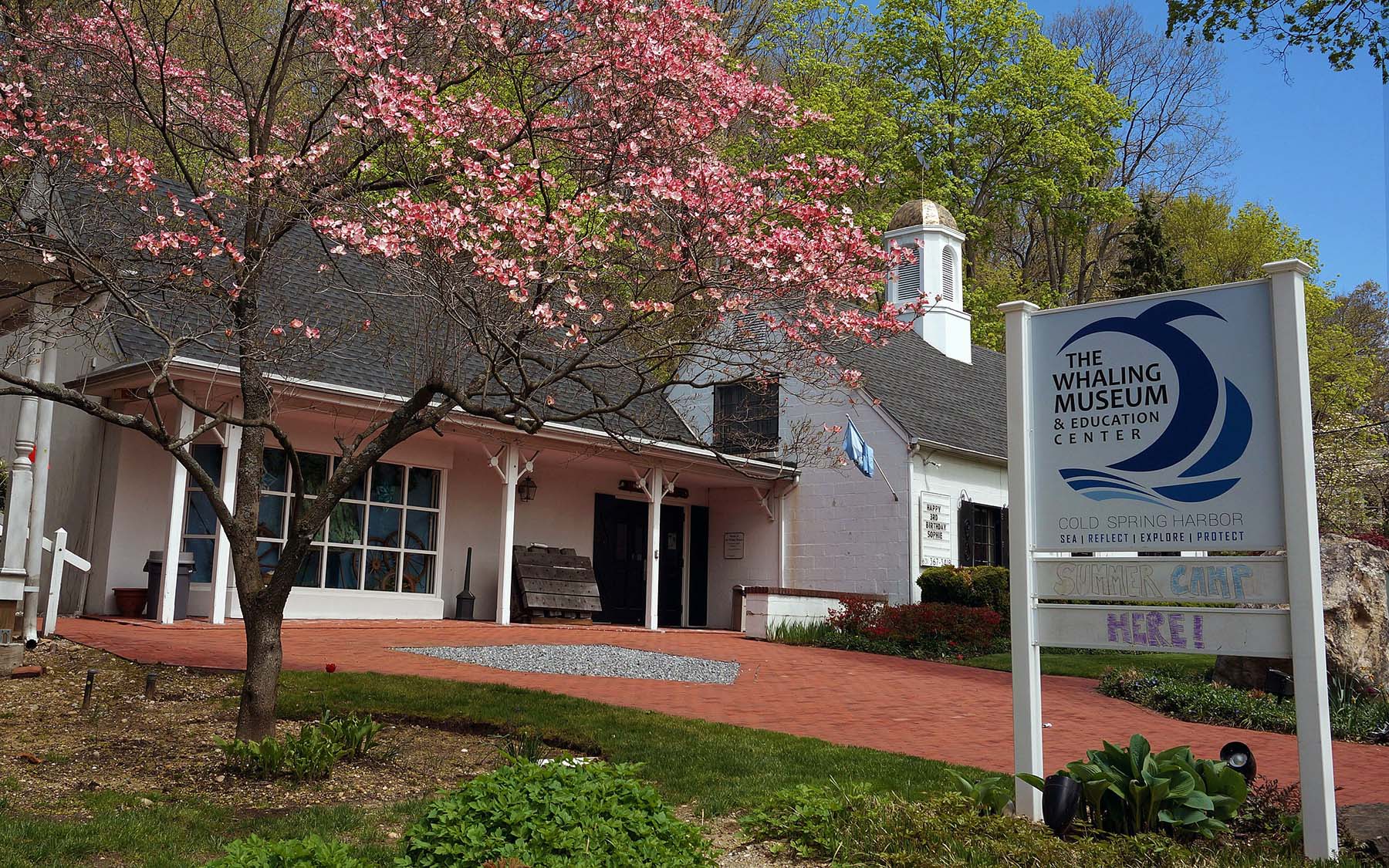Nobel laureate commissions historic painting
Cold Spring Harbor, NY — Whaling Vessels in Cold Spring Harbor, painted in 2011 by acclaimed local artist William Jonas is now the only known image in existence of what whaling vessels in Cold Spring Harbor looked like in the mid 19th century. The work was conceived by Dr. and Mrs. James Watson and given to Cold Spring Harbor Laboratory (CSHL), where it hangs in one of the 122 year-old institution’s original structures, the Carnegie Building, which today houses the CSHL Library & Archives.
Dr. Watson—Nobel laureate and Chancellor Emeritus of Cold Spring Harbor Laboratory—conceived the idea of the image precisely because there were none in existence. It was critical to the Watsons that the painting be both historically accurate and depict a scene immediately recognizable as Cold Spring Harbor, New York. Paul DeOrsay, Executive Director of the Cold Spring Harbor Whaling Museum, and Bob MacKay, Director of Preservation Long Island (formerly the Society for the Preservation of Long Island Antiquities), were invaluable resources to Jonas, ensuring technical and historical accuracy in the depiction of the vessels and the surrounding shoreline.
MacKay appreciated the historic nature of the work, saying “This historical view by Bill Jonas is a fine addition to the laboratory’s collection and the dialogue between past, present and future.”
“Bill was very concerned with authenticity, so I advised him on just where in the harbor ships of that size could float safely, and did some research on the American Eagle, the small steamboat towing the Tuscarora,” said DeOrsay. “We even pored over an 1850 chart of the harbor to locate buildings on shore and collaborated on the ships’ rigging.”
The Artist
William Bond Jonas is a native Long Islander who has lived on the North Shore all his life. He specializes in landscapes, marine paintings and yacht portraits, and is the painter of the internationally famous piece entitled Oyster Bay. Jonas’s commissions have included dozens of paintings of scenes from the north shore of Long Island as well as Bermuda.
Jonas referred to this commission as one of the most difficult of his career, due to the absence of existing imagery, but also one of the most rewarding. “I spent at least as much time on research as I did actually painting, but am very pleased with the result,” he said.
The Painting

The painting is titled Whaling Vessels in Cold Spring Harbor. It depicts the scene on Cold Spring Harbor from August 3, 1848. Jonas wanted to show multiple ships in the harbor, and this is the date when records show that the Tuscarora was being towed to the sound by the steamer, American Eagle. The ship with the white stripe is the Splendid, and the black ship in the background is the Nathaniel P. Tallmadge. The scene is viewed from the southwestern shore of the outer harbor; in fact, it would be the view from the Watsons’ home at Ballybung if it existed at the time.
“On behalf of CSHL, I am honored to have this institution’s Library & Archives serve as the home for a painting of such historical significance to the community,” said Ludmila Pollock, Executive Director of CSHL’s Library and Archives. The history of CSHL is an integral part of the history of Long Island. At the end of the 19th century, the Brooklyn Institute of Arts and Sciences founded a laboratory for training high school and college teachers in marine biology. As biologists and naturalists of that time worked out the consequences of Darwin’s theory of evolution, they established their laboratories at the seashore, where there was an abundance of animals and plants for study. The pristine north shore of Long Island was a natural site for the Brooklyn Institute’s facility—a place to study nature at its source, the sea. In 1889, John D. Jones gave land and buildings—formerly part of the Cold Spring Whaling Company on the southwestern shore of Cold Spring Harbor—to the Institute. The first course at the new Biological Laboratory (the General Course on Biology) began on July 7, 1890, establishing education in the biological sciences as the Laboratory’s first mission.
Whaling Vessels in Cold Spring Harbor is available for public viewing by appointment only on the main floor of the library on CSHL’s main campus. To make an appointment please call (516) 367-6872.
Written by: Communications Department | publicaffairs@cshl.edu | 516-367-8455
